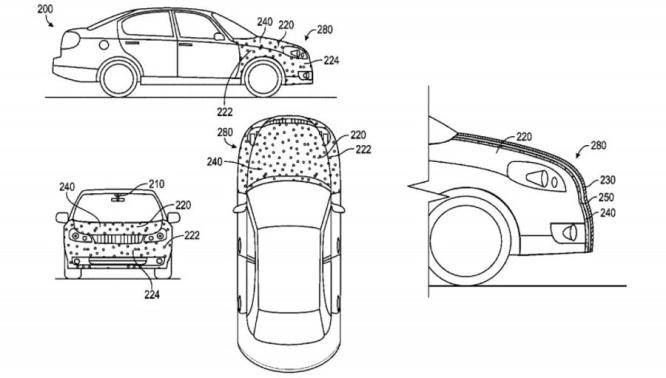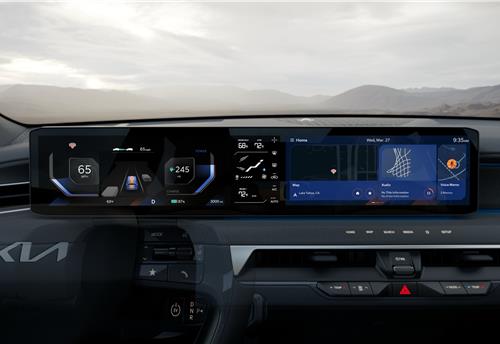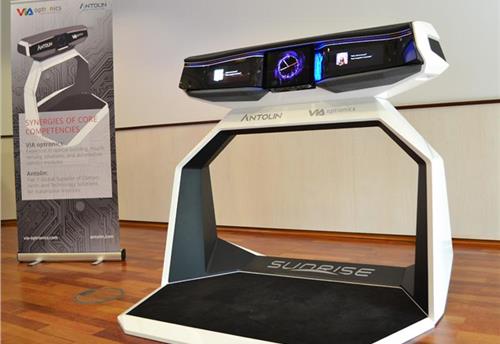Google patents 'sticky bonnet' for pedestrian impacts
Technology uses adhesive layer on bonnet to bind to impacted pedestrians, preventing them from being flung back onto the road.
Google has patented the creation of an innovative ‘sticky’ car bonnet, which is designed to prevent a person from being flung off or back onto the road in the event of a pedestrian collision.
The system targets this ‘secondary stage’ of a pedestrian impact, where most fatalities occur, suggesting it could drastically reduce the number of pedestrian deaths if it were to be successfully integrated into vehicles.
The patent has been published by the USPTO (United States Patent and Trademark Office), revealing its technical details. It shows that a car’s bonnet is covered in an adhesive layer, finished with an outer shell that can be painted to match the rest of the body. The outer shell prevents debris from sticking to the adhesive, but in the event of a pedestrian hitting the surface, this outer shell breaks to allow the person to bind to the adhesive below.

The technology is primarily designed for use on driverless vehicles – of which Google is a key player in advancing automotive technology with its fleet of autonomous vehicles – but it could have the potential to be adapted for use with other automotive platforms. Some reports even suggest the system could be adapted to cater for collisions with other road hazards including bikes and animals.
Google hasn’t released any official information about the technology at this stage, so we’re yet to find out if it will ever be used on a production level. However, the level of detail and research demonstrated in the patent application confirm it’s something the technology giant has clearly invested time and money into.
Google isn’t the only company researching to advance pedestrian safety, Both Volvo and Jaguar have also shown an interest in improving road safety in this way, with Volvo’s external airbags – mounted to the car’s windscreen – being one example of the systems they’ve developed.
Also read:
- Fiat Chrysler likely to produce first autonomous car with Google
RELATED ARTICLES
Marelli Talbros Chassis Systems wins Rs 1,000 crore business from European OEM
The order, to be executed over an eight-year period, is for the supply suspension arms tailored for both conventional in...
Kia launches customised NBA display themes for North American market
Display Themes is a customised service that supports a personalised vehicle experience, allowing users to customise the ...
Antolin and VIA Optronics unveil versatile vehicle cockpit concept
The Sunrise vehicle concept cockpit, which is engineered for seamless transitions between manual and autonomous driving ...





 24 May 2016
24 May 2016
 5178 Views
5178 Views





 Autocar Pro News Desk
Autocar Pro News Desk




